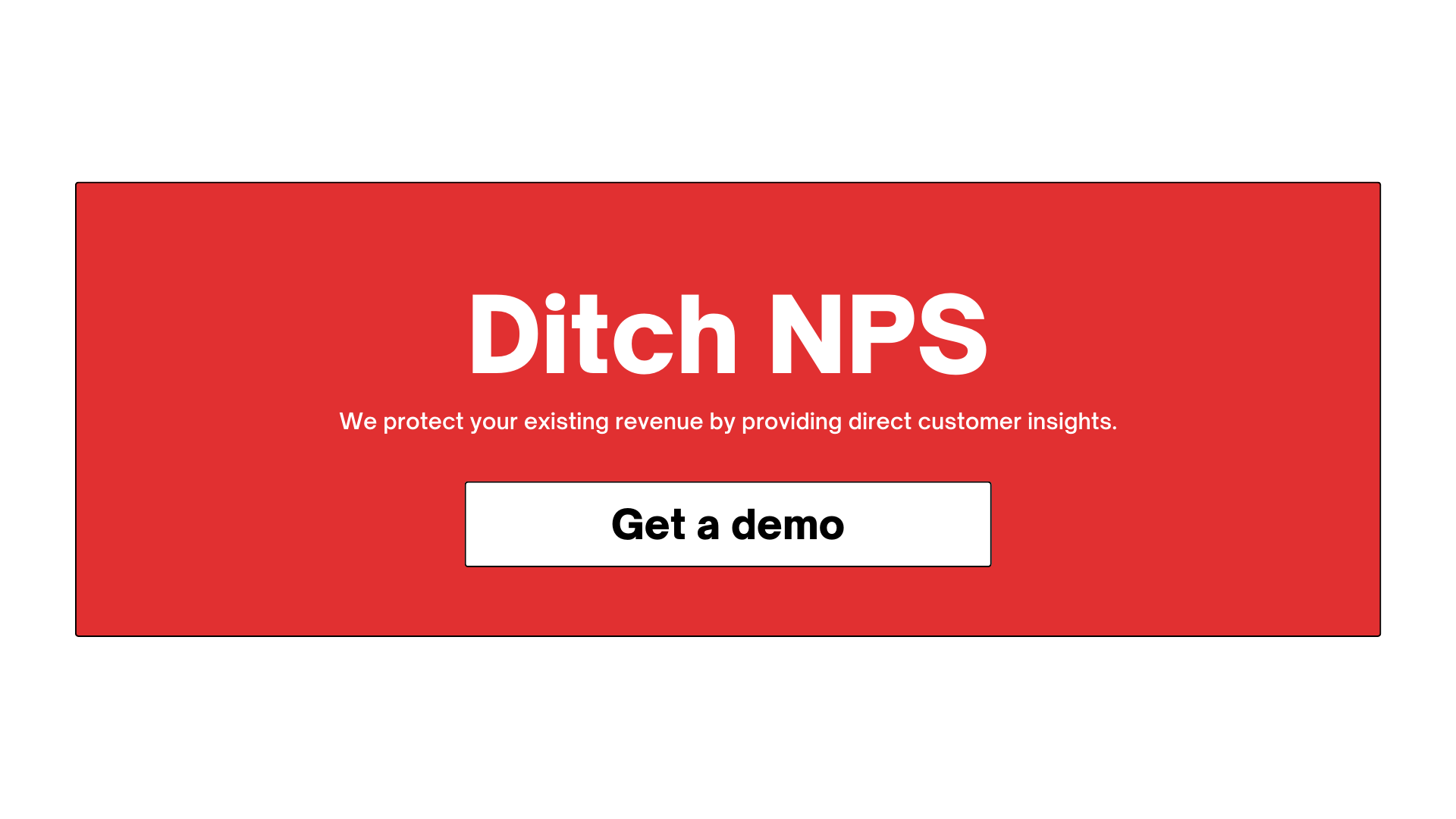Today’s format is different from the norm. I typically share advice or frameworks from other Success leaders, or from articles we’ve written in collaboration with other Success leaders. But today I’m sharing a recently trending topic: the value of NPS.
...
NPS is the industry standard metric to track overall customer engagement with our company, product and brand. Some companies use CSAT as an alternative.
As President of UserTesting, I watched thousands of companies (SMB to Enterprise) struggle with NPS, so here’s my take: NPS is a vanity metric with minimal value for health scores. Here’s why:
- Recency bias: customers are more likely to react to a recent experience, rather than their overall experience with your company.
- Loudest voices: you’re much more likely to get responses from very happy or unhappy customers, while missing the experience of the majority (90%) of customers
- Not actionable: When NPS rises or falls, it’s not obvious what caused the change, or what to do differently to improve results.
- Burns a touchpoint: Every touchpoint with a customer is precious, and since the average NPS survey gets < 20% response rate, that means we wasted the time of the other 80%.
- Equal weighting: NPS assumes all customers are equal, but some customers (Champion, Buyer) have much more weight, and their feedback gets lost among other responses.
Instead of complaining about NPS, here are the questions I’d advocate for asking instead to actually understand the customer experience:
- Has the product been embedded into existing company processes?
- How severe is the ongoing problem that’s solved by the product?
- Does the product and service match the customer’s expectations?
- What features need to be added to make the product ‘complete’?
The answers to these questions show a more complete picture of how the customer is experiencing the product. Success leaders can aggregate this data and share it with other executive team members—the CPO, CRO, CMO, CFO—to influence discussions around the product roadmap, the customer profiles the company should target, the content Marketing should be creating, and more.
And by relying on better data, Success leaders can get to the root cause of customer churn.
….
If you’re interested, I wrote more about this topic a few months ago for OpenView.

The top articles this week:
This week's newsletter features posts on:
- Prepare for an Extended Period of Remote Work
- The Lost Art of Churn Analysis
- Use This Startup's Playbook for Running Impactful Virtual Offsites
- How to Position Your Product as a Strategic Partner Rather Than a Technology Vendor
REMOTE WORK
How to Prepare for an Extended Period of Remote Work
David Hassell, CEO at 15Five, with a comprehensive guidebook for leading a remote team that’s based on the lessons he’s learned from the last 9 years of building a remote-first company. Worth saving and referring back to.
REPORTING
The Lost Art of Churn Reason Analysis
Lincoln Murphy makes the case for asking for churn reasons after the customer has left, and offers an approach for performing churn reason analysis.
TEAM BUILDING
Use This Startup's Playbook for Running Impactful Virtual Offsites
“Even though we can’t convene as we normally would, that just means we need to rethink what [our offsites] look like—not skip them altogether.” One of the best pieces I’ve seen on offsites; this post breaks down everything you need to think through to create an impactful offsite, offering helpful tips all throughout.
ACCOUNT STRATEGY
How to Position Your Product as a Strategic Partner Rather Than a Technology Vendor
“The differentiator between a vendor and a strategic partner is how you define success with your customers.” Here’s Gözde Görce, CSM at Lob, on how other CSMs can build account strategy plans that serve as a map for helping customers succeed with the product, while also positioning the company as a strategic partner.






Submit a comment